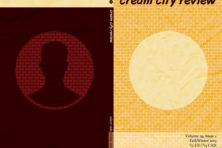Contraceptive Pill for Men and Ice Cream Headaches
- Share
- Tweet
- Pin
- Share
• For years scientists have sought a contraceptive pill for men. Recently researchers at Baylor University discovered a drug that renders male mice infertile without altering their level of testosterone or other hormones. The most important feature of the drug is that its effects are reversible, and once treatment is stopped sperm counts return to normal. The experimental drug, at the moment called JQ1, functions by blocking a protein essential for sperm development. Further testing is required to ensure that the drug is testis specific and can be used on humans without ill effect. (Science, Aug. 17, 2012)
• Plant physiologist Lewis Ziska studies the effects of increased levels of carbon dioxide on plants. He raised poison ivy in chambers that contained carbon dioxide levels of the 1950s (about 300 parts/million), and compared them with plants grown in chambers containing present levels of the gas (about 400 parts/million). Plants grew about three times as fast at the higher concentration of carbon dioxide and contained much more of the chemical that causes a rash in many of the people who come in contact with poison ivy. Also, Ziska reported that ragweed growing at higher concentrations of carbon dioxide flowered earlier and produced more pollen. Allergy sufferers may have to deal with enhanced effects as carbon dioxide levels increase! (National Wildlife, Aug./Sept., 2012)
• Ever experience “ice cream headache?” This is the kind of summertime headache you can get if ice cream (or something very cold) is consumed too rapidly. Harvard researchers believe they have an explanation: extreme cold against the roof of the mouth causes the major artery supplying the brain to expand. This causes a slight increase in pressure inside the skull and a headache results, which diminishes as soon as the blood vessel returns to its non-expanded state. (Scientific American Mind, Sept./Oct., 2012)
• As noted in an earlier Snippet, there are stretches of DNA in our cells that contain cancer genes. The expression of these genes is normally inhibited by repressor molecules. There is another way humans can develop tumors – from viruses found in our general environment. In other words, we can “catch” a cancer from viruses to which we are exposed. Experts figure about 20 percent of human cancers arise from exposure to viruses outside our body. Examples include HPV viruses known to cause hepatitis B and C, which can lead to tumors in the liver, and Epstein-Barr viruses that cause non-Hodgkin lymphoma and tumors in people with severely repressed immune systems. Somehow these viruses gain access to our bodies and enter cells, where they reproduce themselves and simultaneously induce the cells to reproduce in an uncontrolled manner. What do you conclude from the following discovery? A woman’s chances of getting breast cancer depends on where she lives. African and Asian women have a fraction of the risk of getting breast cancer than women living in Europe and North America. But if a woman from Europe or North America moves to Africa or Asia, her risk of acquiring breast cancer diminishes. This seems to affirm that even though our DNA contains cancer genes, the environment also plays a significant role in determining whether we are afflicted with cancer. (Science News, July 28, 2012)
• A healthy brain diet: A low-calorie diet with plenty of protein in the form of lean meats, fish, eggs, low-fat dairy products, nuts, and legumes, and abundant amounts of vitamin-rich fruits, vegetables and whole grains. (Mind, Mood, & Memory, Aug., 2012)

